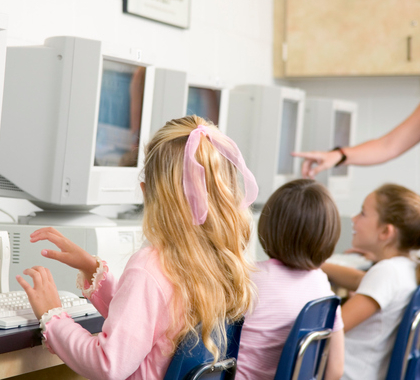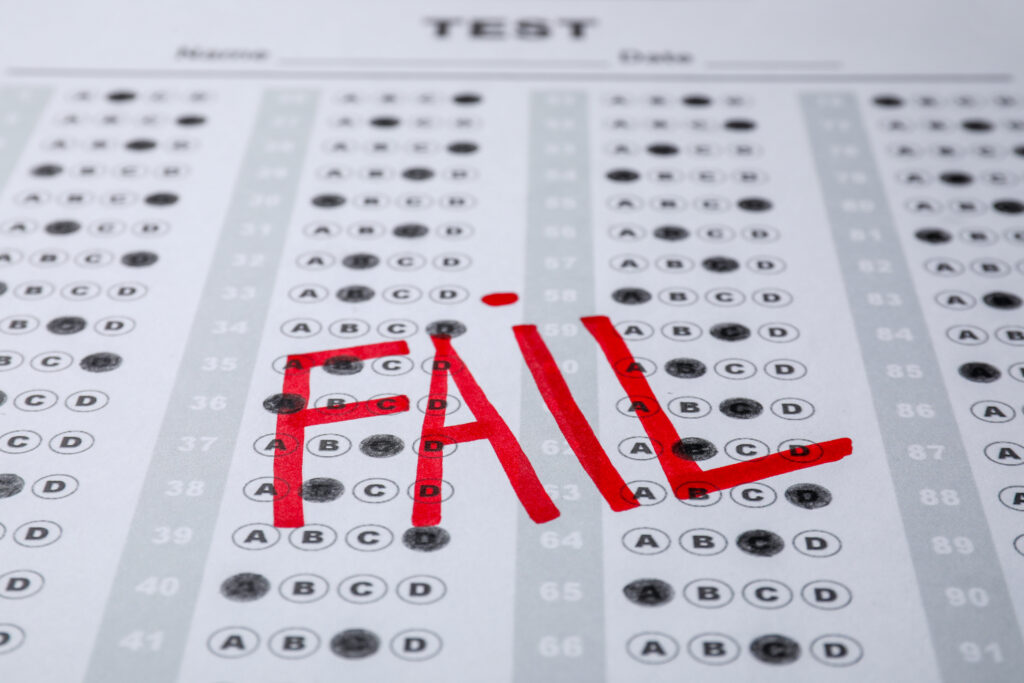The South Carolina General Assembly is considering establishing the Equal Opportunity Education Scholarship Account program, an education savings account (ESA) program for low-income students, children adopted from foster care, students with special needs, and the children of active-duty military members or of members of the military killed in action. If approved, the program would take effect beginning with the 2018–19 school year.
With an ESA, state education funds allocated for a child are placed in a parent-controlled savings account. In the proposed program in South Carolina, parents would then be able to use a state-provided, restricted-use debit card to access the funds to pay for the resources chosen for their child’s unique educational program. The ESAs could be used to pay for tuition and fees at private and parochial schools, textbooks and curriculum, tutoring services, online learning programs, or computer hardware. They could also be used to cover the fees required to take national standardized achievement tests, such as the SAT or ACT, as well as fees for industry certification exams.
Funding of these ESAs would be required to “be equal to the calculated amount of total state per pupil funding the district to which the participating student would have been assigned receives for the student.” All leftover funds could be rolled over for use in the following school year and used to pay tuition costs for higher education. The program would be available to 5 percent of eligible students in 2018–19, 10 percent of eligible students in 2019–20, and all eligible students in 2020–21.
A February 2018 survey of South Carolina private schools by EdChoice found these schools potentially have 20,000 open seats available across grades K–12, and 64 percent of schools surveyed said they would likely be willing to participate in a universal ESA program, while 58 percent said they would be willing to participate in the Equal Opportunity Education Scholarship Account program. Only 5 percent of schools said they would not participate in an ESA program. However, there is still large room for growth in the number of schools that would participate in an ESA program, as just over half responded they were “not familiar” or “not too familiar” with ESAs.
In December 2017, EdChoice released the results of its fifth annual Schooling in America survey, conducted in partnership with Braun Research, Inc. The survey questioned 1,000 adults spread across the country about their views on K–12 education issues. Seventy-one percent of all respondents answered they were in favor of ESAs, while support for the programs is 76 percent among Millennials, 77 percent for those with incomes under $40,000 a year, 77 percent for blacks, and 81 percent for Hispanics.
ESAs are broadly popular because they allow parents to exercise their fundamental right to direct the education of their children. Not only are school choice programs like ESAs popular, they are also effective. In May 2016, EdChoice released a report in which it examines 100 empirical studies of school choice programs. Eighteen of these studies used random assignment to measure outcomes, referred to in academia as the “gold standard.” The overwhelming majority of the available empirical evidence makes it clear educational choice offers families improved access to high-quality schools that meet their widely diverse needs and desires, and it does so at a lower cost while simultaneously benefitting public school students and taxpayers, decreasing segregation, and improving civic values and practices.
ESA programs allow families much greater opportunities to meet each child’s particular education needs. The goal of public education in South Carolina today and in the years to come should be to allow all parents to choose which schools their children attend, require every school to compete for every student who walks through its doors, and make sure every child has the opportunity to attend a quality school.
The following documents provide more information about ESAs and school choice.
Exploring South Carolina’s Private Education Sector
https://www.edchoice.org/wp-content/uploads/2018/02/Exploring-South-Carolinas-Private-Education-Sector-by-Andrew-Catt-and-Michael-Shaw.pdf
This is the ninth entry in EdChoice’s School Survey Series. This brief synthesizes information about South Carolina’s private schools from a survey conducted by EdChoice. The survey looks at South Carolina private schools’ open seats, tuition and fees, regulatory concerns, and interest in school choice programs.
Education Savings Accounts: The Future of School Choice Has Arrived
https://heartland.org/publications-resources/publications/education-savings-accounts-the-future-of-school-choice-has-arrived
In this Heartland Policy Brief, Policy Analyst Tim Benson discusses how universal ESA programs offer the most comprehensive range of educational choices to parents; describes the six ESA programs currently in operation; and reviews possible state-level constitutional challenges to ESA programs.
A Win-Win Solution: The Empirical Evidence on School Choice (Fourth Edition)
http://www.edchoice.org/wp-content/uploads/2016/05/A-Win-Win-Solution-The-Empirical-Evidence-on-School-Choice.pdf
This paper by EdChoice details how a vast body of research shows educational choice programs improve academic outcomes for students and schools, saves taxpayers money, reduces segregation in schools, and improves students’ civic values. This edition brings together a total of 100 empirical studies examining these essential questions in one comprehensive report.
Ten State Solutions to Emerging Issues
https://heartland.org/publications-resources/publications/ten-state-solutions-to-emerging-issues-2018
This Heartland Institute booklet explores solutions to the top public policy issues facing the states in 2018 and beyond in the areas of budget and taxes, education, energy and environment, health care, and constitutional reform. The solutions identified are proven reform ideas that have garnered significant support among the states and with legislators.
2017 Schooling in America: Public Opinion on K–12 Education, Parent Experiences, School Choice, and the Role of the Federal Government
https://www.edchoice.org/wp-content/uploads/2017/11/2017-Schooling-In-America-by-Paul-DiPerna-Michael-Shaw-and-Andrew-D-Catt.pdf
This annual EdChoice survey, conducted in partnership with Braun Research, Inc., measures public opinion and awareness on a range of K–12 education topics, including parents’ schooling preferences, educational choice policies, and the federal government’s role in education. The survey also records response levels, differences, and intensities for citizens located across the country and in a variety of demographic groups.
The Public Benefit of Private Schooling: Test Scores Rise When There Is More of It
https://object.cato.org/sites/cato.org/files/pubs/pdf/pa830.pdf
This Policy Analysis from the Cato Institute examined the effect that increased access to private schooling has on international student test scores in 52 countries around the world, finding that a 1 percentage point increase in the private share of total primary schooling enrollment would lead to moderate increases in student math, reading, and science achievement within nations.
Competition: For the Children
https://heartland.org/publications-resources/publications/competition-for-the-children
This study from the Texas Public Policy Foundation claims universal school choice results in higher test scores for students remaining in traditional public schools and improved high school graduation rates.
Recalibrating Accountability: Education Savings Accounts as Vehicles of Choice and Innovation
https://heartland.org/publications-resources/publications/recalibrating-accountability-education-savings-accounts-as-vehicles-of-choice-and-innovation
This Special Report from The Heritage Foundation and the Texas Public Policy Foundation explores how education savings accounts expand educational opportunities and hold education providers directly accountable to parents. The report also identifies several common types of regulations that can undermine the effectiveness of the program and how they can be avoided.
The School Voucher Audit: Do Publicly Funded Private School Choice Programs Save Money?
http://www.edchoice.org/wp-content/uploads/2015/07/The-School-Voucher-Audit-Do-Publicly-Funded-Private-School-Choice-Programs-Save-Money.pdf
This report by Jeff Spalding of EdChoice provides a program-for-program breakdown of school voucher costs and savings. On the whole, Spalding says these programs have provided a cumulative savings of $1.3 billion since 2007, or roughly $3,400 per pupil.
The Education Debit Card II: What Arizona Parents Purchase with Education Savings Accounts
http://www.edchoice.org/wp-content/uploads/2016/02/2016-2-The-Education-Debit-Card-II-WEB-1.pdf
This follow-up EdChoice report by Jonathan Butcher and Lindsey Burke examines additional data from Arizona’s Empowerment Scholarship Account program. Butcher and Burke reveal what ESA families’ expenditures are now and how spending trends have changed since their previous report.
Nothing in this Research & Commentary is intended to influence the passage of legislation, and it does not necessarily represent the views of The Heartland Institute. For further information on this subject, visit School Reform News, The Heartland Institute’s website, and PolicyBot, Heartland’s free online research database.
The Heartland Institute can send an expert to your state to testify or brief your caucus; host an event in your state; or send you further information on a topic. Please don’t hesitate to contact us if we can be of assistance! If you have any questions or comments, contact John Nothdurft, Heartland’s director of government relations, at [email protected] or 312/377-4000.




